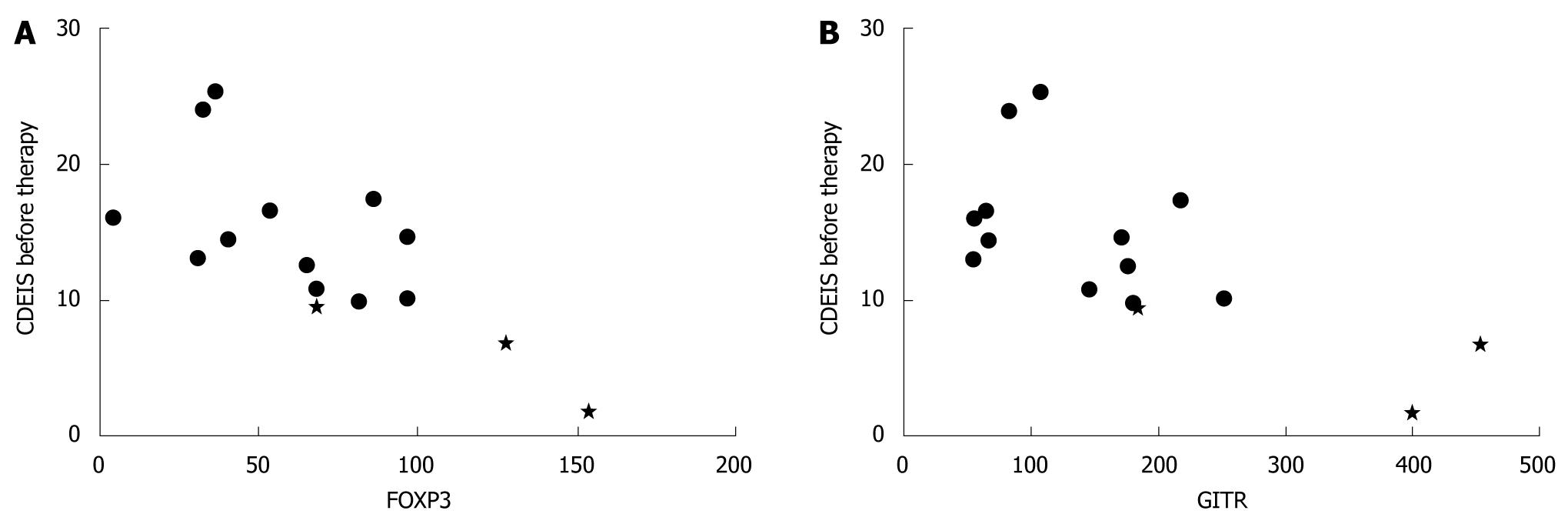Copyright
©2010 Baishideng Publishing Group Co.
World J Gastroenterol. Dec 14, 2010; 16(46): 5845-5851
Published online Dec 14, 2010. doi: 10.3748/wjg.v16.i46.5845
Published online Dec 14, 2010. doi: 10.3748/wjg.v16.i46.5845
Figure 1 Patient serum withdrawn before anti-tumor necrosis factor-α therapy induced forkhead transcription factor 3 (A) and glucocorticoid-induced tumour necrosis factor receptor (B) specific mRNA expression (relative units) in activated target cells that correlated negatively with pre-treatment Crohn's disease endoscopic index of severity.
[points; forkhead transcription factor 3 (FOXP3) r = -0.621, P = 0.013; glucocorticoid-induced tumour necrosis factor receptor (GITR) r = -0.625, P = 0.013]. Patients who had no decrease in Crohn's disease endoscopic index of severity (CDEIS) during therapy are marked with star.
Figure 2 Patient serum withdrawn before anti-tumor necrosis factor-α therapy induced (A) forkhead transcription factor 3 (r = -0.
600, P = 0.018) and (B) glucocorticoid-induced tumour necrosis factor receptor (r = -0.589, P = 0.021) specific mRNA expression (relative units) in activated target cells that had a negative correlation with the change of Crohn’s disease endoscopic index of severity during three months therapy. The change of Crohn’s disease endoscopic index of severity (CDEIS) corresponds with the decrease in points along improvement and is given as a positive value to illustrate the magnitude of therapeutic response. Patients who showed no decrease in the CDEIS during therapy are marked with star. GITR: Glucocorticoid-induced tumour necrosis factor receptor; FOXP3: Forkhead transcription factor 3.
Figure 3 Patient serum withdrawn before anti-tumor necrosis factor-α therapy induced forkhead transcription factor 3 specific mRNA expression (relative units) in activated target cells that correlated negatively with erythrocyte sedimentation rate.
ESR: Erythrocyte sedimentation rate. r = -0.548, P = 0.034.
- Citation: Rintamäki H, Sipponen T, Salo HM, Vaarala O, Kolho KL. Serum immune-activation potency and response to anti-TNF-α therapy in Crohn's disease. World J Gastroenterol 2010; 16(46): 5845-5851
- URL: https://www.wjgnet.com/1007-9327/full/v16/i46/5845.htm
- DOI: https://dx.doi.org/10.3748/wjg.v16.i46.5845











